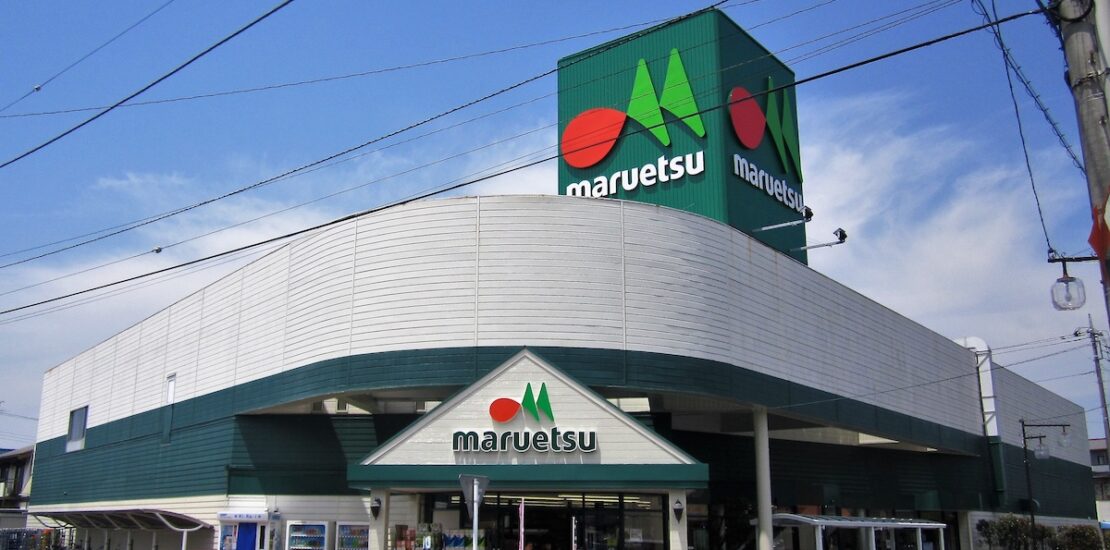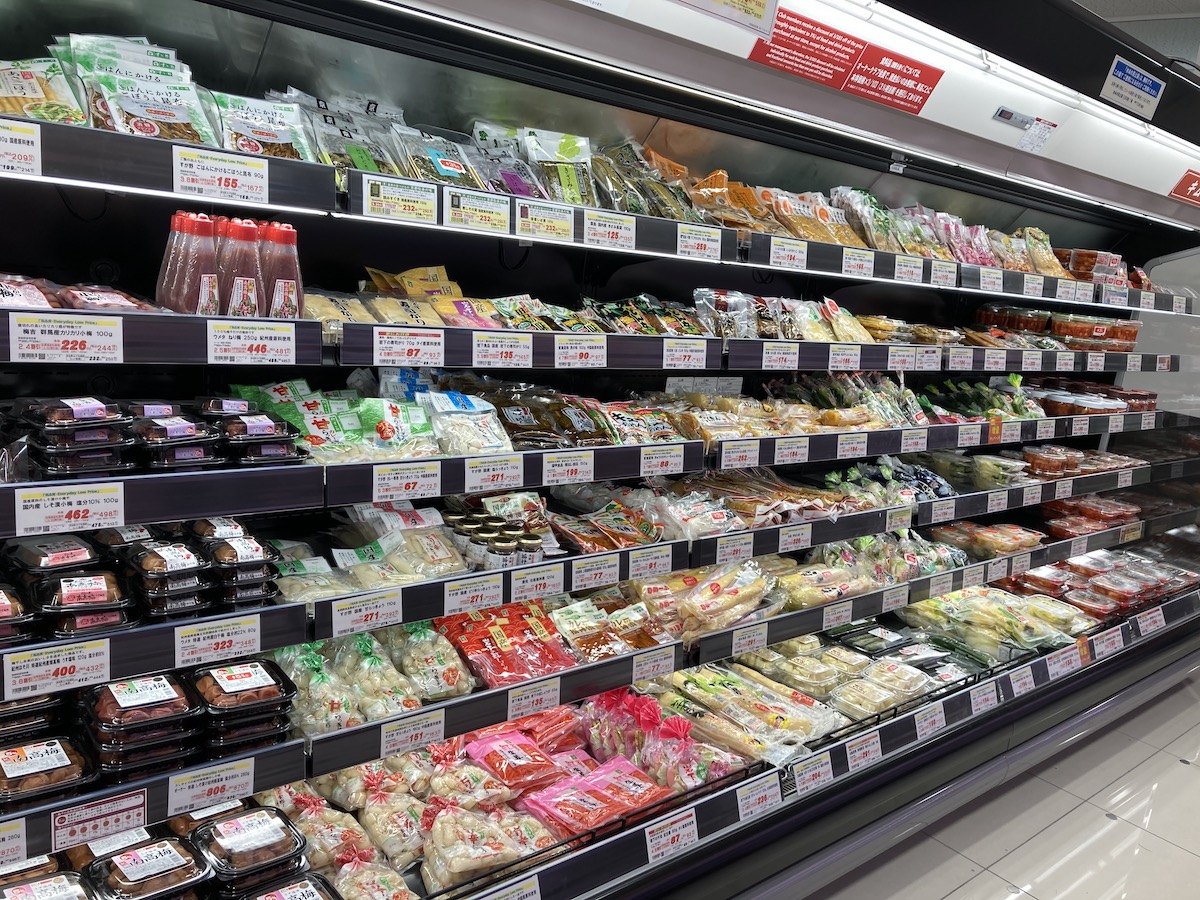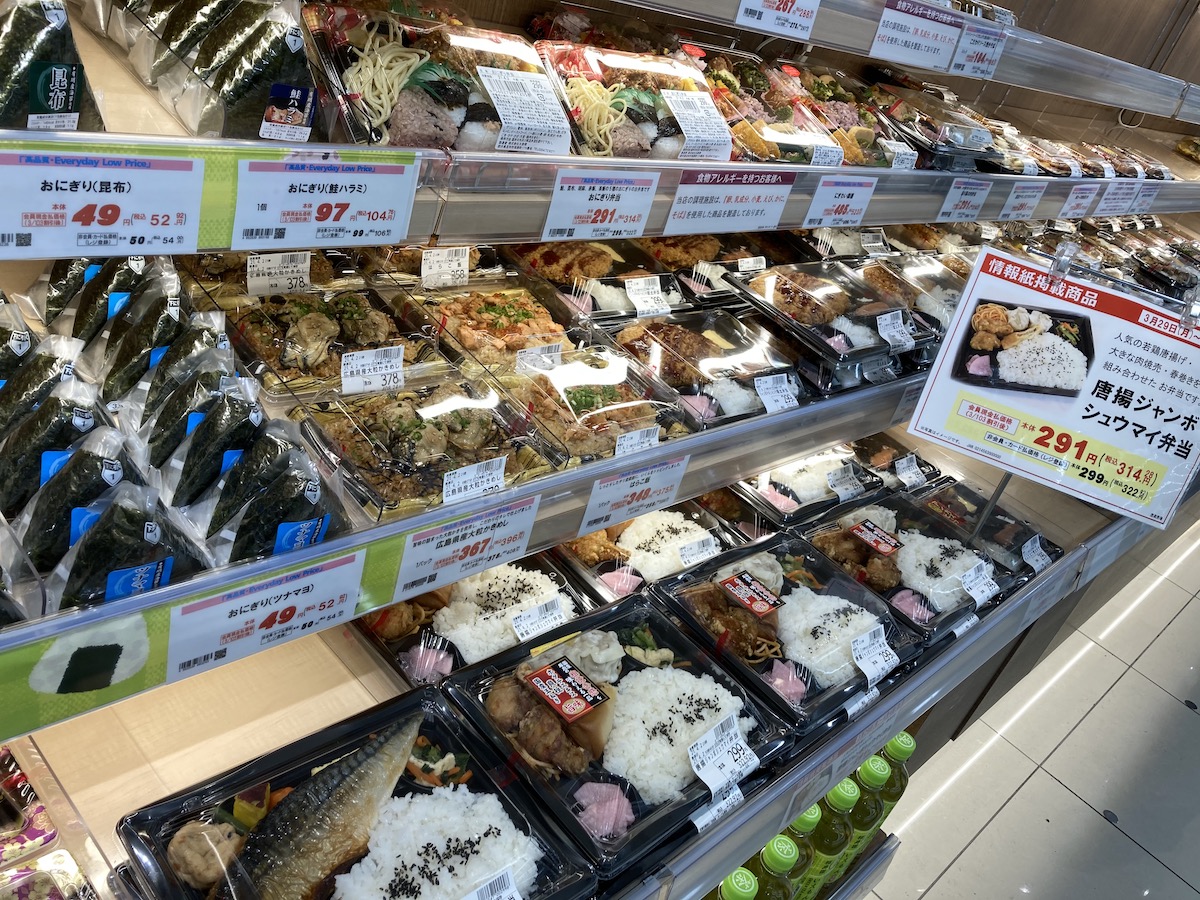Supermarket shopping can be a scary and exciting thing in a new country! It is essential to learn your way around the local supermarket. This article is your beginner’s guide to supermarket shopping in Japan.

Supermarket shopping can be a scary and exciting thing in a new country! Eating out all the time can get expensive, so it is essential to learn your way around the local supermarket. There are numerous supermarkets located in Tokyo, but some of the big chains include Seiyu, Yamazaki, Yaoko, and Maruetsu. And of course, there’s always your department store basement supermarket デパ地下 such as Seibu, Isetan, Tokyu or Tobu. デパ地下 are perfect for picking up last-minute pre-cooked side dishes to pair with your meal.
What are some of the basic items to buy? What kanji should you know?
Here is your beginner’s guide to supermarket shopping in Japan.
Tip #1: Find “your” supermarket.
Visit the supermarkets in your area and find out which ones have special sale days such as meat sale 肉の市, frozen food sale 冷凍食品の市 or morning sales 朝市. And if you shop at one store more often, consider getting their membership card 会員カード. My personal favorite supermarket is OK オーケー, as they generally have low prices, and their membership card gives an additional 3% discount on all purchases. (Note: After a few purchases, the ¥200 membership fee is paid off and you’ll start saving.)
Tip #2: Learn the kanji of essential items.
Do you want pork 豚肉 or beef 牛肉 or chicken 鶏肉? Most supermarkets have numerous cuts such as thin-sliced beef 牛切り落とし肉, ground pork 豚ミンチ or 豚ひき肉, or chicken breast 鶏むね肉. Don’t be scared away by the number of meat options: learn the kanji and try out new recipes.

You may wonder what kind of milk to buy. There are usually three options: whole milk, low-fat 低脂肪, or non-fat 無脂肪. Whole milk will usually simply have the kanji 牛乳 and may have the name of a place, company or simply おいしい牛乳. One point to note: check the ingredients on the back! If you want pure milk (without other dairy substitutes or additives), make sure that the only ingredient listed is 生乳 under ingredients.

And for those who are lactose intolerant, soy milk 豆乳 is easy to find. Other substitutes such as almond milk アーモンドミルク and oat milk オーツミルク are becoming more common.
Tip #3: Explore the vegetables.
Are you surprised by the different types of greens and variety of mushrooms at the supermarket? In addition to the basic lettuce and spinach ほうれん草、you may want to learn the names of other greens such as bok choy チンゲン菜 (good for stir-fry, ramen topping or hot pot), mizuna 水菜 (good in cold salads), or komatsuna 小松菜 (delicious when boiled). The kanji 菜 is good to know, as it is often tacked on to the end of greens and means ‘vegetable.’

You will find more than a few variety of mushrooms in the Japanese supermarket. Those little brown ones? Shimeji しめじ. Skinny long white ones? Enoki えのき. Brown bundle? Maitake 舞茸. Large brown ones? Shiitake 椎茸. Mushrooms not only provide an amazing texture to any dish, but they are full of nutrients. No wonder mushrooms are drawn as cute characters with faces on them!

Tip #4: Tofu is your friend.
Whether you’re making a delicious hot pot, miso soup or simply want to eat cold tofu with green onions and sesame oil, you’ll want to know the different types of tofu. The three main types of tofu are momen 木綿 (harder and grainy texture), kinu 絹 (soft and slimy), or abura-age 油揚げ (fried). You will find them in various sizes, and some are packaged into small containers for a single serving.

Tip #5: Know your pickles.
Japan has a special pickle to go with almost every meal. Pickles aid with digestion, so these are especially common when eating fried foods. Some of the essential pickles include:
- For donburi bowls, yakisoba and okonomiyaki: 紅しょうが (pickled ginger)
- For curry rice: 福神漬け(ふくじんづけ), a delicious blend of vegetables such as pickled daikon, eggplant, lotus root れんこん、sword beanナタマメ, cucumber and shiitake mushroom
- For basically any meal, but commonly served with sushi or after a large meal: たくあん, the flavorful pickled daikon

Tip #6: Shopping at the end of the day saves.
If you stop at the supermarket on your way home from work, check for marked-down items. Meat is often discounted, and remember to check out the pre-made meal section of the store for marked-down bento 弁当, sushi, salads or side dishes. You never know what kinds of treasures you’ll find.

Tip #7: Don’t confuse miso for peanut butter.
And finally, if you’re new to Japanese food items, don’t pick up miso paste and think that it’s peanut butter! Miso toast does not quite satisfy the palate as when you are expecting peanut butter toast.



